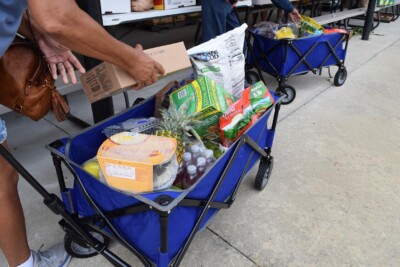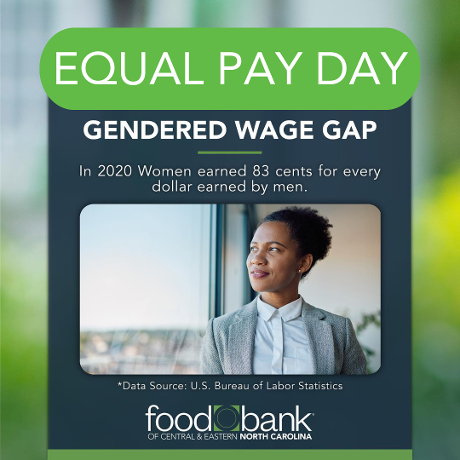Food Banks across the state of North Carolina announced today that they are seeing a drastic increase in need for food and resources from neighbors experiencing hunger following the February 2023 end to Supplemental Nutrition Assistance Program (SNAP) emergency allotments.

In the 34 counties served by the Food Bank of Central & Eastern North Carolina (the Food Bank), our partner agencies saw an increase of 24% in the month of March over those served in January, a trend that is anticipated to continue as benefits expire and inflation continues to cause financial strain. The Food Bank’s network of partner agencies are serving approximately 80% more individuals with food and resources than pre-COVID-19 pandemic.
“I’d say that our food bank, like those around the state, are facing yet another perfect storm in the work of nourishing our neighbors and building solutions that will end hunger,” said Ashley C. McCumber, President & CEO of the Food Bank. “With food prices increasing and federal funds and programs sunsetting, while at the same time more folks are in need of food from us, we’re working to ensure the resources are there to keep our services consistent.”
With food bank funding still in negotiation as part of the General Assembly’s budget process as well as proposed cuts to federal nutrition programs in the United States congress, food banks across the state of North Carolina are shoring up resources to continue serving the community.
“The North Carolina food banks are incredibly thankful for support entrusted in us to do the work of hunger relief in our state, and work as good and efficient stewards of the resources we receive,” said Mike Darrow, Executive Director of Feeding the Carolinas. “The increased need for food and programming that we’re seeing currently and planning for do require additional resources and action on the part of our federal, state, and local leaders to help shape policies that support North Carolinians experiencing hunger.”
It’s important for us to continue the work to implement new programs and find strategic, efficient ways to meet the increased need while building solutions for ending hunger at its root causes. We are taking the following steps to support this increase in need:
• Sharing the information of the partner agency network- the approximately 700 pantries, soup kitchens, and program partners across our 34-county service area- for people to connect with and receive support from: foodbankcenc.org/foodfinder)
• Holding Pop Up Markets in the community to provide additional food and resources (facebook.com/FoodBankCENC/events)
• Expending exponentially more funds than before the pandemic, including utilizing state and federal grants and funds where possible, to purchase nutritious food that we are not receiving through other streams.
• Focusing on increasing partner agencies’ capacity to distribute foods in efficient ways by funding facility and equipment upgrades that allow them to serve more food and non-food essentials safely and quickly to their communities.
• Advocating with elected officials for strengthening the programs that are effective in building food security. The Farm Bill, which is legislation renewed approximately every five years, contains the funding for programs that are vital to fighting hunger, including SNAP, TEFAP, and a monthly senior food box program (Commodities Supplemental Food Program, CSFP).






